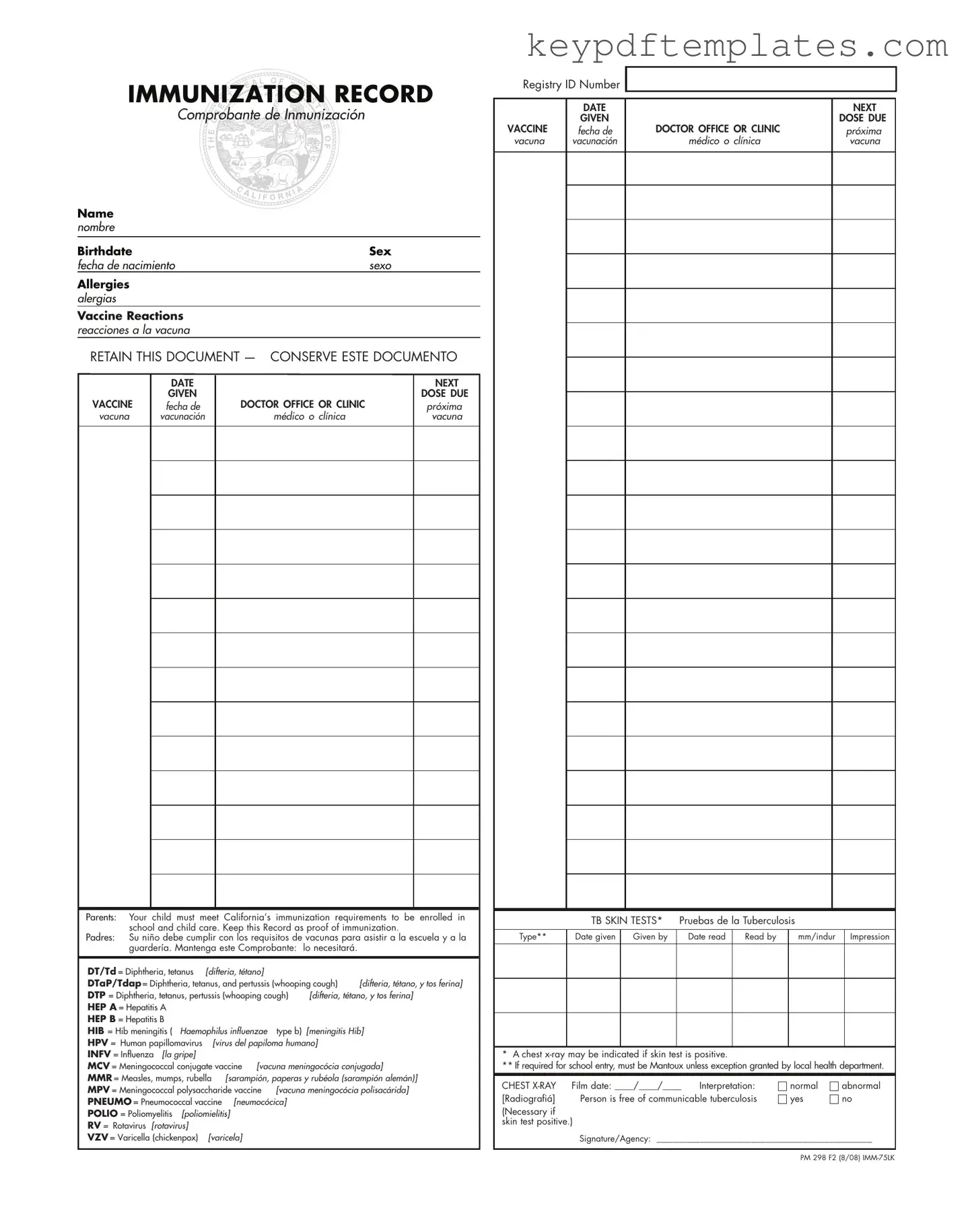Get Immunization Record Form
The Immunization Record form is an essential document that tracks an individual's vaccination history, ensuring that they meet the necessary health requirements for school and childcare enrollment. This form not only includes personal details such as name and birthdate but also records vital information about vaccines received and any reactions experienced. Keeping this document safe is crucial, as it serves as proof of immunization compliance.
Modify Document Online
